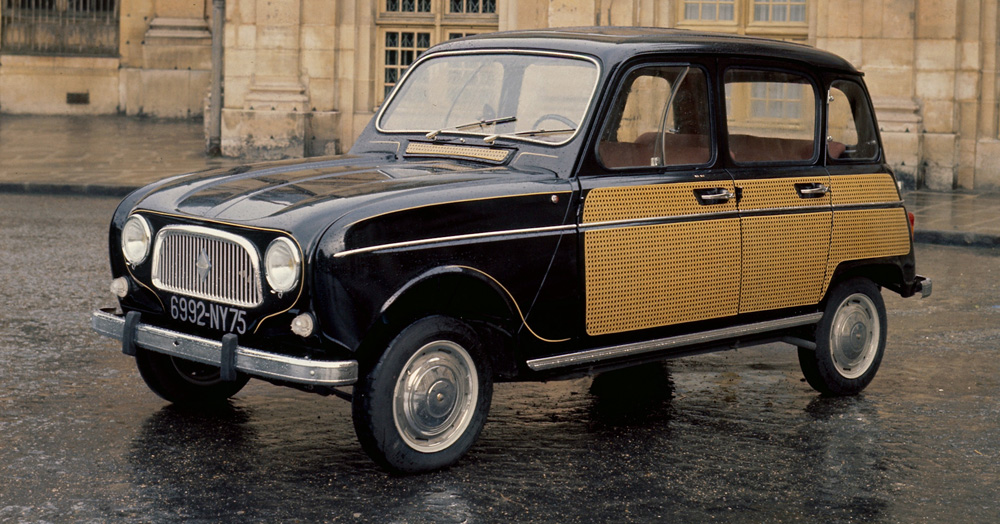
La Renault 4 was the fruit of a concept. In 1956, Pierre Dreyfus, then president of the Régie Nationale des Usines Renault, launched the notion of a “blue jeans” car. Like the now-familiar article of clothing which is worn the world over, he wanted to produce a versatile, inexpensive car with a worldwide calling which could match the changes in society that were being observed as the 1960s approached. Following a five-year incubation period, the Renault 4, the make’s first front-wheel drive passengercar, was unveiled to the press before going on display at the 1961 Paris Motor Show. A van and three saloon versions were launched simultaneously: the R3, which was dropped from the catalogue the following year, the R4 and the R4L (the “L” standing for luxury), soon to become the household name for a model that lost no time in finding a place in the French public’s hearts.
Its unrivalled interior, low running costs and ability to adapt to all types of use made it an instant hit. Just six years after its launch, Renault 4 production exceeded the million mark, and other records were broken as the car reached a total production figure of 8,135,424 in the course of its 31-year career.
The Renault 4 was just as successful outside of France and was produced or assembled in no fewer than 27 countries (in addition to France), some as far afield as Australia, South Africa, Chile and the Philippines. Indeed, six in ten sales were outside of Renault’s home market. During the long period when it was available for sale, the Renault 4 was made in several different versions, including a van, a four-wheel drive vehicle and a cabriolet. Other variants, such as the Rodeo, and a long list of limited editions were also released, the best known of which in France were the Parisienne (1963), the Safari (1975), the Jogging (1981) and the Sixties (1985). Meanwhile, the model benefited from its own off-road racing championship and was a favourite means of transport for young people itching to explore the planet. It was also seen on such celebrated motorsport events as the Rallye Monte-Carlo and the Paris-Dakar. It even finished the celebrated African rally-raid on the podium one year. In 1992, a numbered special edition farewell version – “Bye-Bye” – was released to salute the incredible success of the model, which continued to be manufactured in Slovenia and Morocco, until 1994, although only in small numbers.
Renault 4 Profile
- Project launch: 1956
- Project name: Project 112. In-house, the project was nicknamed “350” in reference to the price listed in the brief (350,000 Francs).
- First public appearances: Press: August 1961 in France’s Camargue region. General public: October 1961 at the Paris Motor Show.
- Number of countries where the model was manufactured/assembled: 28 countries (including France).
- Number of countries where the model was marketed: More than 100.
- End of production: December 3, 1992, Renault announced the end of the Renault 4 in a press release; only two factories would continue to produce the Renault 4 after that date and through 1994: Morocco and Slovenia.
- Total number of vehicles produced: Official figure: 8,135,424
The Renault 4 is the world’s third best-selling vehicle after the Volkswagen Beetle and Ford Model T. (Models no longer in production)
Names and nicknames of the Renault 4
- In Italy, the JP4 was marketed under the name “Frog”.
- In Spain, it was nicknamed “Cuatro Latas” (four boxes).
- In the former Yugoslavia, it was called “Katcra” (Catherine).
- In Tunisia, it was referred to as the “R4 Monastir”, after the hometown of President Bourguiba.
- In Southern Rhodesia (Zimbabwe), it was nicknamed the Noddy Car.
- In Argentina, it earned the nickname “El Correcaminos” (path runner).
- In Finland, it became “Tiparellu” (droplet).
A one-make racing series: Coupe de France Renault Cross Elf (1974 until 1984).
The main engines used for the R4: 603cc, 747cc, 782cc, 845cc, 956cc and 1,108cc
Brief Renault 4 timeline
1956
Pierre Dreyfus, President of the Rgie Nationale des Usines Renault, launches his project for the blue jean car.
1959
Prototypes of the future Renault 4 crisscross the roads of the world. From the U.S.A. to Sweden, via Sardinia and Guinea, the test cars are put through their paces in extreme driving conditions.
1961
(July 6): The last 4CV rolls out of the Billancourt plant. All of its tooling is dismantled to make room for the assembly lines for the new Renault 4.
(August): Presentation of the Renault 4 and the Renault 3 to the press in France’s Camargue region.
(October): The first public appearance of the new Renault 4 at the Paris Motor Show (Grand Palais).
1965
The R4 officially becomes the Renault 4.
1966
Launch of Renault’s “Les Routes du Monde” operation (ended in 1984).
1967
Production reaches almost 370,000 units per year as the Renault 4 becomes France’s bestselling French car. September saw the addition of the large aluminium grille.
1974
(September): introduction of the plastic grille.
1977
Renault 4 sales reach the five-million mark (all versions and body types included). Renault becomes Europe’s biggest car manufacturer.
1980
The Renault 4 claims third place on the Paris-Dakar Rally in the hands of the Marreau brothers.
1985
The threshold of seven million Renault 4 sales is exceeded.
1988
The Renault 4 bids farewell to the German market with the “Sal” limited edition (500 units) after 27 years of success and more than 900,000 cars imported. The van version is dropped from the French catalogue.
1992
The last 1,000 Renault 4 cars leave the Billancourt plant. The GTL Clan versions will have the distinction of featuring a commemorative plaque on the instrument panel which reads “Bye-Bye”.
On 3rd December, Renault announces the official end of the Renault 4’s career. Only two countries would continue to produce the model after that date (until 1994): Morocco and Slovenia.
Total Renault 4 production units exceeded the 8,130,000 mark.
Limited editions and special versions
- 1963 Sinpar four-wheel drive versions (until the end of production)
- 1963 Parisienne
- 1968 Plein Air
- 1970 Rodeo, an R4 derivative manufactured by ACL
- 1975 Safari limited edition
- 1981 JP4, an R4 derivative produced by CAR Systme Jogging special edition (5,000 vehicles)
- 1982 Shopping limited edition (300 vehicles, produced in Belgium)
- 1985 Sixties limited edition (2,200 vehicles)
- 1988 Sal career-ending special edition version for the German market (500 vehicles)
- 1991 Cartes Jeunes limited edition
- 1992 Bye-Bye career-ending special edition version for the French market (1,000 vehicles)
Renault 4, the “blue jeans” car
The so-called “blue jeans” car, which marked a fresh approach to the automobile as pioneered by the visionary Pierre Dreyfus, gave birth to the iconic Renault 4 which has demonstrated the relevance of this leap forward for 50 years as one of the most produced models in the industry’s history.
An off-the-peg range
Design work for the Renault 4 began in 1949 with Project 109, a direct, more spacious and slightly more powerful descendant of the 4 CV. However, its incubation was a slow process and, in September 1952, the design team began to explore an alternative solution to replace the 4 CV, focusing on two essential conditions. First of all, it had to be four-seater with similar performance and fuel consumption characteristics to those of the 4 CV. Secondly, its retail price was set at 300,000 Francs. Renault’s market research department insisted on the necessity of producing several versions, including a popularly-priced saloon, a semi-utility version and a van. This guiding principle drove the engineers to the conclusion that the 4 CV’s architecture – especially its rear-mounted engine – was not suited to a van.
To solve this issue of producing three versions, Fernand Picard explored the idea of creating a platform-type chassis with an as-yet vague notion of interchangeable bodies. The idea of a monocoque structure – seen as necessary to minimise body weight and production costs – was dropped. Instead, a revolutionary approach to body design saw the light of day, giving customers the possibility to specify the configuration of their vehicle at the dealership! This off-the-peg approach led to Renault’s dealers fitting elements that distinguished between the saloon, semi-van and van models as a function of the customer’s wishes.
The concept even permitted owners to have a choice of configurations in their garage, and also made it potentially possible to create a body rental system or a standard exchange programme for new and used models! All these ideas were explored, especially since the emergence of plastic materials made this la carte system of body types a realistic option. The other key factory was the choice of powertrain, with Picard insisting on a system that “should be removable and interchangeable, which essentially means front-wheel.” It was only in 1954 that Pierre Lefaucheux gave the green light for the project that would go on to be the Dauphine in 1956. This is also when the 1952 preliminary project moved on to the design phase under the name Project 112; the objective being to replace the 4 CV!
“Give me space!”
The accidental death of Pierre Lefaucheux on February 11, 1955, and the appointment of Pierre as to the head of the Rgie Renault on March 27 had a very big impact on the project to replace the 4 CV. As a high-ranking civil servant at France’s Ministry of Industrial Production and Vice-President of the Rgie since 1948, Dreyfus knew Renault inside and out. On January 2, 1956, Dreyfus hired Yves Georges to work in the design department with Picard. More than a confrontation between a young Polytechnique graduate and an experienced engineer from Arts & Mtiers, this appointment reflected a more scientific approach to research with the accent on calculation work and planning rather than pragmatism and testing.While Picard relegated himself to a lesser role, Georges and Dreyfus undertook a fertile collaboration, reconciling and synthesising the theoretically different ideas of the intellectual and the engineer. Dreyfus approached automobiles with the eye and analytical framework of a sociologist. Dreyfus said he was struck by the fact that Renault sold cars “for urban dwellers only” – city cars, in sum – whereas Citron was making cars for the rural population.
Dreyfus also questioned the conformity of automobiles, to the point of actively going against the trend: “Cars should no longer just be seats and a trunk. Give me space,” he instructed Georges.Dreyfus wanted a car that was suited to the needs of a fast-changing society, not only in France but also in the countries that would soon form the six-nation Common Market. People everywhere were leaving the countryside behind in a vast movement in which modernity began with rural exodus. These new urbanites did not settle in the town centres; but headed instead for new urban districts that were starting to expand and morph into suburbs. It was a new world where the population was becoming increasingly active and a new middle class was burgeoning. Suburbs became a new place, part urban and part rural, a halfway house between the city and the country.
The movement was perfectly anticipated by Dreyfus: it was the end of city cars being dramatically different from country cars; the time had come to invent versatile models, although this notion wasn’t restricted to cabin space. The onslaught of built-up areas and the lack of public transport networks saw automobiles begin to play a prominent role. They needed to be workhorses from Monday to Friday, but then fulfil the leisure requirements of families on weekends and during holidays. There was one final development – a slow but significant one which became more pronounced over the years: the role of women in society. With full employment, the addition of a second income shook up social categories and family models. It also sped up consumption, including car consumption. The product was duly adopted by women: not only did the number of driving licenses finally start to balance out between the sexes, but women also began using automobiles, which led to them playing a decisive role in their purchase.
For Dreyfus, cars of the future would be increasingly versatile, for use in the country and the city, during the working week and at the weekend, for work and play, and for men and women. This is where the notion of the “blue jeans car” would take on its full meaning.
The blue jeans car and technical revolution
The blue jeans car broke with conventions just like its namesake “which people can wear in any situation if you do away with the pretentions of snobbism and social conformity,” observed Dreyfus. “Jeans are an article of clothing which you can wear to do anything, anywhere. On top of that, they are not expensive and are easily replaced. Work jeans were made from indestructible denim cloth which was also used for the overalls distributed to New Deal workers in the United States, as well as for casual trousers which would prove popular with students and artists before becoming a staple in women’s wardrobes. More rebellious than revolutionary, both unisex and egalitarian, jeans were as much the uniform of James Dean and Marlon Brando as the preferred bottoms of the hippies who co-opted them with personal touches like embroidery and bell bottoms.
The automobile world would have its own jeans. Pierre Dreyfus, revisiting Project 112 in 1956, would be the one to name their price. It would be 350,000 Francs and not a centime more! The message was so clear that the designers started to call the project the “350”. It goes without saying that designing a new car round a price tag was a highly unusual method at the time. This imperative begat the idea of carrying over the Dauphine’s 747cc engine and gearbox. Interior fittings would be sparse: the 350 was going to be inexpensive because of what it did not have.
Design embellishments weren’t a priority. Dreyfus himself defined the limits: the 350 should be less ugly than its direct rival, but not nearly as appealing as the Dauphine.
To make the car versatile, the first idea was the flat floor, which facilitated loading. This naturally led to three other features: the lack of a rear end panel, an extremely low sill and a “back entrance” which would go on to be known as a tailgate. This startlingly new architecture shook up the technical culture at Renault (coming right after the launch of the Estafette van in 1959, the Renault 4 was the first front-wheel drive saloon from Renault) and, more generally, the automobile industry as a whole. In fact, Renault was inventing the two-volume vehicle with an engine compartment and a combined cabin/boot. The interior space could then evolve according to the needs of the moment by folding the rear bench seat to convert the family car into a van, or vice-versa. In response to the call for a car that was as sturdy, go-everywhere and indestructible as denim cloth, Renault opted for independent torsion bar suspensions which offer generous travel, making it possible to drive on dirt roads or trunk roads. While jeans required no pressing, the 350 would have no maintenance demands either: no more lubrication points and water levels to monitor (thanks to the creation of a sealed cooling circuit). With its expansion chamber (a Renault innovation) to collect the excess liquid dilated at hot temperatures, the cooling system worked as a closed circuit to prevent losses and do away with the need for topping up. This freed Renault 4 owners from worrying about the fluid level; the added bonus was that they no longer had to add antifreeze in the winter. This also meant the end of lubrication concerns because the joints were protected by air-tight bellows. At a time when many automobiles still required lengthy maintenance routines, the new Renault heralded the era of hassle-free cars…
Marie Chantal sends her regards
Since the Auto Journal affair and the hunt for DS prototypes, car manufacturers conducted their tests under a veil of extreme secrecy. The cars were sent to locations as far away as possible with myriad precautions. Louis Buty’s testing team was responsible for taking the Renault 4 prototypes to the four corners of the earth to test their sturdiness and fine-tune their design. To avoid raising suspicion, inside and outside the plant, it was agreed that the car would be referred to as “Marie Chantal”. This yielded laconic telegrammes such as “Marie Chantal and the kids send their best wishes to their parents” dispatched from remote lands without any allusions to testing work or incidents along the way.
And yet there was no shortage of adventures. The most famous would definitely have to be the episode in which Pierre Dreyfus sent the Renault 4 plunging to the bottom of a ravine in Sardinia. This incident, which could have been serious, was concealed from the entire Renault staff and forced Louis Buty, Pierre Dreyfus’s unlucky passenger, to invent a colourful story about an accident in Italy to explain the numerous stitches on his face and his slipped disc. Pierre Dreyfus set the public record straight a few years later when he awarded him the French National Order of Merit.
“Take the wheel!”
In June 1961, a caravan of tarp-covered trucks carried prototypes of the future Renault 4 throughout France to present the newest addition to the family to dealers in the Renault network. Several meetings were held at the rate of one per commercial zone; each time a private facility was rented with security provided by the Gendarmerie! The 3,500 brand representatives received a comprehensive file which presented the car inside and out. As for the general public, it was a whole other Renault that visitors encountered at the Paris Auto Show which, at the time, was still held in the grandiose Grand Palais.
In parallel to the exhibition a major promotional operation hit the streets of Paris: “Take the wheel”. Some 200 Renault 4 cars were made available to motorists who wanted to test drive it. The event was a success with nearly 60,000 Parisians taking turns at the wheel to get to know this brand new car. It was new for its shape, for the technical solutions it employed and, most especially, for the concept it promoted: urban but not snobby, utilitarian but not rough. The new Renault 4, offered in four versions (R3, R4, R4L, R4L Super Confort), was able to adapt to any setting and any lifestyle…
The 4L generations
Produced from 1961 to 1992, the Renault 4, today generally referred to using the generic name 4L, accompanied three generations of customers, which were obviously different and varied just like blue jeans themselves, which transitioned from working tools to a symbol of youth before becoming widely worn trousers. Throughout the 1960s, Renault 4 owners were buyers won over by its twobox design and unparalleled interior space. It was a daring choice that saw Renault steer away from the 4 CV replacement market. The brand set a new tone, retaining nothing but the product’s rustic appeal: the Renault 4 exuded simplicity thanks to its modest equipment and far from-dull colours, features which helped it achieve a competitive retail price.
Like Levis jeans, the little Renault came with numbers, R3 or R4, which provided a way to better adapt to customer practices and offer slightly different cuts: the R3 and its absolute minimalism with just four windows or the R4 and its guaranteed sobriety, but with additional side windows to evoke a limousine (in theory)! The R4 Super represented the Billancourt version of luxury, with a rear tailgate which opened downward and a rear window designed to slide into the tailgate. From common origins to customisation.
The Renault 4 established the concept of cars as working instruments. White or grey for skilled contractors, dark blue for the Gendarmerie, sky blue for EDF-GDF and bright yellow for the postal service: the Renault 4 wore the colours of its employers without undermining its hardworking spirit, much like blue jeans which, thanks to their sturdiness, began to replace canvas overalls and coveralls at work sites. But in 1963, it added a Parisienne version: black jeans with wicker patterned pockets, the last touch of versatility to ensure women finally had a car of their own.
The next generation was the 1970s. Access to automobiles slowly opened up to young people, boys and girls alike in the unisex spirit that defined the times. The Renault 4 was liberated. More than ever, the Renault 4 remained the blue jean car. The always-in-style jeans were also shifting from indigo blue to faded hues. And the rate of change gathered speed. As the former default worker’s garment was festooned with peace and love embroidered symbols and bell bottoms, the Renault 4 became the cult car of a curious, different young generation of carefree hippies. The mood was expressed in song by Michel Fugain and his Big Bazard band to the tune of “C’est la Fte”. It was rich symbolism which foreshadowed the lifestyle car.
The Renault 4 of the 1980s stayed true to the image of jeans, worn by the young and the less young, men and women, at work and at play, regardless of the season and the country. The democratisation of the Renault 4 kept pace with jeans as they became commonplace—or even universal. The Renault 4 was no one’s car because it was everyone’s car: it crossed all age groups and social categories and adapted to every culture. A global car, but not referred to as such because the word did not yet exist! And because denim pairs with a variety of looks, the Renault 4 also mixed things up with its new series. It was inspired by pleasure (Safari), environmentalism (GTL), fashion (Jogging, Sixties), youth (Carte Jeunes) and even history (Bye-Bye)!
But the story ended in 1992. Nearly two decades later, the Renault 4 is still a feature in the automobile landscape, where there is a purpose or a passion for everyone: very active clubs are flourishing all around the globe and the numerous surviving models are restored, modified, entered in rallies (including the quintessential 4L Trophy) or simply used every day by several generations of “trelleurs”.
The 4L has become a timeless cult favourite. The blue jeans of the car world!
Renault 4, an international calling
Pierre Dreyfus drove the point home as soon as he became President of the Renault Board in March 1956: the company should eventually export 50% of its production. In the short term, Renault used the brand’s latest model, the Dauphine, to conquer foreign markets. It was a success, despite a disappointing commercial adventure in the United States. The Renault 4, where Pierre Dreyfus’s influences were very visible, was intentionally designed to drive this international ambition, becoming Renault’s weapon of conquest. But on one condition: that its innovative concept please the market. “It is obvious that we must sell the Renault 4 abroad; that is one of the essential goals of this model,” announced Pierre Dreyfus in October 1961.
The R4 in the Common Market
Pierre Dreyfus had a sense of history. He was a committed European who had completed some of his studies outside France and understood the political and economic necessity of European rapprochement. The signing of the Treaty of Rome in March 1957 was for him “a major event capable of overcoming the errors of the past and inventing new philosophies” which gave birth on 1st January 1958, to the Common Market. Its implementation was gradual: over a 10-year period customs duties were lowered by 10% each year among the six partners, France, Germany, Italy and the three Benelux countries. Pierre Dreyfus was unequivocal: “It would be an honour for Renault to extend beyond its borders and be a driving force in the construction of the Common Market”. The fact remained that such a change in markets required significant, costly efforts, starting with a commercial introduction strategy. Distribution networks were not all at the same level: Renault could only count on the Benelux countries in the immediate future. The brand had been present in the Netherlands and Belgium since 1904 and 1908 respectively then it built sales subsidiaries in 1922 and 1928 with the Agence Commerciale Belge des Automobiles Renault, which also handled sales in Luxembourg, and the Afdelling Holland in The Hague.
The situation was less straightforward in Germany and Italy where the post-reconstruction phase was complicated. Although Renault had established a sales subsidiary in Berlin in 1903, Renault Automobiles AG, the division between West and East Germany turned the tables: Renault had to reposition itself solely in West Germany and rebuild a network around a new subsidiary located in Cologne in 1960 (and later moved to Brhl), still named Renault Automobil AG. Thus Renault’s reorganisation came somewhat late in the game, which meant all of its hopes were pinned on the Dauphine and soon thereafter on the Renault 4 to make headway in a market largely dominated by the Beetle. Renault was confident on this front because the Renault 4 was so different from the Volkswagen that it was not in competition with it. That left Italy. With a very minor presence in Italy because of Fiat’s dominance, in 1958 the Board signed a collaboration agreement with Fiat’s major competitor, Torino-based Alfa Romeo. This company shared with Renault the status of a nationalised manufacturer. The agreement was very ambitious because Alfa Romeo sellers would sell Renault cars in Italy just as the Renault network in France would distribute Alfa Romeo. The urge to take on Fiat even drove Alfa Romeo to offer up its plants to assemble the Dauphine, in eager anticipation of the Renault 4, which had been presented to Alfa Romeo before its market launch!
All of this explains that the Renault 4 arrived in October 1961 at a time when Renault was structuring its commercial positions in the countries of the Common Market. The impact was immediate. In 1962, Renault had a portfolio of 7,500 orders for the Renault 4 in France and nearly 5,000 in Europe. Germany accounted for 1,400 cars, with an average order rate of 65 per day; meanwhile 2,280 were expected for delivery in Italy with 80 orders per day. The Benelux countries were also significant contributors with 90 combined orders per day. The rate of production at le Seguin had been set at 400 cars per day given the still incomplete tooling of the line, but it had to quickly ramp up to 500 per day to satisfy the demands of a Europe that was visibly the big market for the Renault 4.
This market expanded with the democratisation of automobiles and the development of customer bases, a structuring element in the 1960s and 1970s. This market took full advantage of full employment and salary increases, as well as the emergence of the middle class and the emergence throughout Europe of a young generation for whom escape and travel were a way of life. The Renault 4’s markets then benefited from the expansion of the EEC to Denmark, Ireland and the United Kingdom and later to Greece, Portugal and Spain. Renault even managed to break into the tightly sealed Eastern Europe which was nevertheless accessible thanks to the goodwill of Yugoslavian authorities which consented to import the Renault 4 and later even to manufacture them and sell a few units in its neighbour countries.
From exports to local assembly
The Renault 4 won over customers in the Mediterranean countries with Italy leading the way. Renault’s growth was impressive because the brand achieved a market penetration rate of 3.8% by the end of 1962, which was equal to the shares of Alfa Romeo and Lancia. But Alfa Romeo refused to step up production of the Renault 4 and decided to create a second distribution network to separate its customers from those seeking to buy the Renault 4. Renault had to hastily train small garage owners who were frightened by the ins and outs of modern sales and after-sales processes. Moreover, legislation introduced in 1963 drastically reduced sales: they fell from 100 to 40 per day. Lawmakers approved a new tax calculated according to a car’s length and footprint! Suddenly, the tax on the Renault 4 rocketed from 30,000 lires, which was originally equal to the tax on the Fiat 500 and 600 models, to 62,000 lires! Renault tried to persuade the Italian government that a 4L produced by Alfa Romeo which, moreover, was manufactured in a plant owned by the government’s industrial holding company, was an Italian car and that this legislation was harmful to the nation’s economy. But nothing changed and a divorce was inevitable. Here Europe revealed itself, shedding light on the complexity of a union in a competitive environment as well as the challenge of overseas assembly. Nevertheless, this was indeed the industrial solution that Renault would have to explore for the future because many countries limited their imports to force auto makers to assemble their cars in-country.
This was notably the case for Spain, where automobile imports were strictly prohibited. But Renault was lucky because it got started there in 1953 with the construction of a factory in Valladolid, FASA. The Renault 4 became the car that would change the face of internationalisation for Renault.
The Renault 4 was first assembled with the industrial mechanism in place, which ensured that the Dauphine could be built in Spain. Its success was such that Renault had to quickly consider new solutions in terms of sheet metal and engine plants. A development plan was implemented to create a mechanical company, FACSA, and a bodywork company, FAMESA. The financial constraints involved forced Renault to request support from Banco Iberico and to call on its Swiss financial subsidiary, Renault Holding, to provide 200 million pesetas between 1964 and 1965.
While the event enabled Renault to take financial control of FASA, more important was the fact that it forced the manufacturer to copy the industrial tool that had been put in place in France. FASA became a full-fledged component of the production system just like the Belgian plant in Haren which also began making the Renault 4. The success of the 4L redrew the borders of Renault and foreshadowed the outline of the future Europe.
A globalisation pioneer
Contrary to the forecasts made for Project 112, the Renault 4 met with success well beyond the bounds of Europe. While the prototypes were tested on the hot African trails of Guinea and the frozen roads of Minnesota, these efforts were intended more to seek out extreme conditions of use than to prepare the Renault for these specific driving conditions. As early as 1961, Pierre Dreyfus began asking the sales division about selling the Renault 4 in the United States. Opinions were so divided that the decision was put off until 1962 when the idea of selling the Renault 4 in Canada was about to become reality, knowing full well that a launch in Canada opened the door to the United States! But for lack of an adequate after-sales network, the decision was again delayed.
It was in Latin America that the Renault 4 was wildly successful. From 1950 to 1967, Renault adopted a very structured approach to developing its business on this continent, which it felt was destined to become a single market, particularly when several countries negotiated the Andean Pact, which would lead to the creation of Mercosur 30 years later. With Argentina, Chile, Brazil, Colombia, Mexico, Peru, Uruguay and Venezuela, Renault had eight factories, which was reduced to seven when the manufacturer had to exit Brazil in 1968. They covered all of this continent whose customers were close to European, and especially Hispanic, culture, preferring to buy something French rather than something American, if only to show their hostility to U.S. imperialism. There were real political underpinnings, particularly as Renault announced in 1960 its intention to build a plant in Cuba for the Renault 4 (the idea was quickly abandoned out of fear of the consequences of having assets in Cuba at a time when Renault was shipping 500 Dauphines per day to the United States)! Thanks to all these facilities, the Renault 4 was at the heart of an industrial structure that was highly innovative because of its complementarity: Chile supplied gearboxes to Colombia and Argentina, which in turn received bodywork parts from Chile. As for Colombia, it handled all the universal joints for these models and manufactured engines; it shipped them to Chile and Argentina, receiving gearboxes and bodywork parts in return. Renault pursued a policy of shared development. It would grow its own sales first, but also foster growth in the countries where the company did business. This was reflected in Renault’s approach of entrusting foreign plants with the production of important parts and components like engines and gearboxes.
This is precisely what the Americans refused to do in order to maintain control of their production and keep a firm hand on faraway plants and economies. What remained was for the Renault 4 to become a major presence in the South American automobile landscape with nearly 25% of the model’s global production!
The internationalisation of the Renault 4 revealed another facet of the brand and product’s history. The Renault 4 played a role in the development of young countries–the ones comprising the Third World and the nations which emerged after decolonisation. Renault contributed to the industrialisation of North Africa and Sub-Saharan Africa by helping to build car plants, which were the starting point for a broader industrialisation policy: this was the key to true independence.
Steelworks and mechanical, chemical or textile industries were all economic sectors that could emerge once local businesses began fulfilling the role of automotive suppliers and subcontractors. This model allowed Renault to have a presence in Algeria, Cte d’Ivoire, Madagascar, Morocco, Tunisia and Zaire.
The political engagement does not hide other factors that were far more economic and financial. For tax reasons, and particularly in an effort to limit import duties which were increasingly high in the 1960s and 1970s, the Renault 4 was assembled or manufactured (meaning it used more or fewer locally made components) by industrial firms working under contract. Therefore, in several countries the 4L was produced in independent plants and sometimes alongside vehicles from competing brands. This was especially the case in the former British colonies of South Africa, Australia and New Zealand.
These vastly different examples point to one common conclusion: before the word globalisation even existed, the Renault 4 responded to common goals of mobility; the need for simple, practical transportation solutions; and essential notions of cars as tools. The Renault 4 proved to be an international car with a presence on every continent. There was perhaps one hold-out: the model’s presence in Asia was weak. It suffered from very strong local competition and the lack of a Renault structural presence in this part of the world until the end of the 1980s, and perhaps an imperfect adaptation to different markets where two- and three-wheels were the rule. Nevertheless, between 1961 and 1992, the Renault 4 became a blueprint for a global vision of automobiles, making it recognisable across the world and even the symbol of a certain kind of know-how and attitude.
The Renault 4 takes over track
From the formidable East African Safari, where it came fifth in its category in 1962 driven by Bernard Consten and Claude Le Guzec, to the Monte Carlo Rally and the trails of South America, the Renault 4 allowed multiple generations to take up the challenge of motorsports and see the world, thanks to its road handling qualities and sturdy build.
The “Coupe de France Renault Cross Elf”: school of dirt track racing
Having already led the way with the Coupe Gordini, Renault expanded its Feeder Formulas in 1974 by launching the “Coupe de France Renault Cross Elf”. In partnership with the specialist magazine ‘Champion’, Renault allowed novice racing drivers to sample the delights of dirt track racing. Intended to be as economical as possible, the race was only driven with Renault 4s.
Preparation was kept to a bare minimum, with a strictly genuine part engine except for the addition of a Devil exhaust. Most of the work was carried out on the body and the chassis. The bodywork had to remain compliant with the original specifications; only the side windows, lights and hubcaps could be removed. Finally, the windscreen – if kept – had to be a Triplex. The “Coupe de France Renault Cross” was a huge hit with racing drivers thanks to its low registration fees (barely 200 francs), more than 10,000 francs in prize money for each race and a Renault 5 Coupe promised to the season winner. On average, around sixty racing drivers battled it out before sometimes more than 5,000 spectators amassed along the tracks of the 12 stages that made up a season.
The call of the tracks: seeing the world
In the late 1960s, freedom-loving young people began to go on long journeys, later referred to as ‘treks’. They set off at the wheels of their everyday cars – often 4Ls – to brave the world’s roads. Asia – a very fashionable destination at the time – attracted most of these adventurers, with smaller numbers setting off for the south towards sub-Saharan Africa. The Sahara, with its thousands of miles of emptiness and sand, formed a barrier that for many was insurmountable. It was here that the Marreau brothers chose to quench their thirst for adventure. With the goal of beating the record for driving from the Cape to Algiers (set the previous year in a Renault 12 Gordini), in 1969 they went on a scouting trip in a Renault 4.
Paris-Dakar: David versus Goliath
Eight years later and again in a Renault 4, the brothers waited at the starting line of a new type of rally, a race over several thousand miles from Paris to Dakar. They performed superbly, finishing fifth overall and second in the car category behind the potent Range Rover V8, twice as powerful as their 4L. The race in 1980 saw the Marreau brothers and their Renault 4, boosted by a Renault 5 Alpine engine, take third place on the podium, only one hour and ten minutes behind the winners. The Paris-Dakar race became the stuff of legend, the Marreau brothers heroes and the astute Renault 4 the symbol of a rally where amateurs could still claim victory over official teams.
Ten thousand miles in a Renault 4!
Michle Ray, Eliane Lucotte, Betty Grard and Martine Libersart: four young women tackling a continent. Ten thousand miles separate Ushuaia, Tierra Del Fuego, and Anchorage, Alaska, along the entire American continent. Over four and a half months, the two teams braved regions as tricky and varied as the Andes, the Amazonian rainforest and the Utah salt desert before reaching the icy rock slopes of Tierra Del Fuego, demonstrating the sturdiness and agility of the Renault 4.
“Routes du Monde”
In 1966, Renault launched the “Routes du Monde” programme, in association with the French Society of explorers and travellers. This programme consisted of organising theme-based expeditions for six to eight teams of young people between the ages of 18 and 25 driving Renault 4s. Candidates were required to submit to a jury a travel project on a particular theme, taking them anywhere in the world. Every year, between 150 and 200 applications were received. Renault lent out its cars for a period of one month to a year or even more, offering courses in mechanics, cinema and photography on top. The programme lasted until 1984.
The Renault 4 involved in the present 4L Trophy
In a remarkable phenomenon, young people in the early 21st century have also elevated the Renault 4 to the status of a symbolic icon of freedom. The 4L Trophy has certainly played its part in this. Launched in 1998, this race sees 1,200 teams of students compete in a 4,000-mile navigation trial taking them from Paris to the south of Morocco. Most of the cars used have clocked up many years and thousands of miles already. The magic of the Renault 4 can thus still be seen: an adventurer, driven everywhere, in sand and over rocky ground. The Renault 4 is so reliable that it never really breaks down – the teams of amateurs taking part in the race manage to get along with the resources they have on board and rejoin the camp every night…
The Renault 4, 30 Years of Evolution
1961 On 3 August, the first Renault 4 came off the assembly lines at the Ile Seguin plant. On 4 October, at the last Paris Auto Show held at the Grand Palais, the new Renault was introduced. At that time Renault 4 was offered in three versions:
• The R3 (type R 1121), a scaled-back version with a 603 cc (type 690) engine that attained 22.5 SAE HP and entitled buyers to a fiscal rating of 3 HP. From the outside the R3 can be distinguished by its painted tubular bumpers, the lack of hubcaps and its four side windows. In the passenger compartment, minimalism ruled: there was a single sun visor on the driver’s side, equipped with a frail three-spoke steering wheel.
• The R4 (type R 1120) resembled the R3, notably with its third side window partially covered by a metal sheet, but it was fitted with a 747 cc engine (type 680).
• Beyond the economical models, the range included an R4L, whose six side windows gave it a claim on the title “limousine”; this version also had a 747 cc engine under its hood.
The first van version of the Renault 4 was presented right after the 1961 Auto Show. Listed as a type R 2102, its payload was 300 kg and it had the same trim as the R3 and R4, but with wider tyres (145 x 330). The R4 van was offered with an optional hinged rear roof flap dubbed “giraffe roof” (“Girafon”).
In November 1961, the fuel tank filler hole was transferred to the right rear wing. The entire range used a three-speed gearbox.
1962 March saw the debut of the R4 Super model (type R 1122), which was also considered to be a “super comfort” model, according to sales documentation from the period. It kept the 747 cc engine, but its horsepower grew to 32 SAE HP. This new version reused the R4L’s six-window body, but innovated with its new fold-down rear tailgate with drop window. This version was equipped with chrome-plated dual-tube bumpers. The R3 was discontinued in September. The Super was now fitted with an 845 cc engine (type 800-02), which made its fiscal rating 5 HP and earned it a new place in the Renault nomenclature: R 1124. The R4L abandoned its tubular bumpers in favour of chrome-plated finned fenders. S.I.N.P.A.R. (Socit Industrielle de Production et d’Adaptation Rhodanienne), Renault’s long-standing subcontractor specialised in construction site vehicles, began using the Renault 4 as an “all terrain”, four-wheel drive vehicle.
1963 In September, the rear tailgate was enhanced with hinges that made it possible to hold the door open. These replaced the antique “rod” that had been used to hold the tailgate in the open position. Another new development was the addition to the range of a fully synchronised gearbox. As for the van, it received a painted finned front bumper, whereas the rear bumper remained tubular. The R4 Super was dropped from the catalogue in favour of the R4L Super (type R 1123). The “Parisienne” entered the scene in December. This elegant version of the R4L was the result of an operation launched in conjunction with Elle magazine. Recognisable by its decorative side panels and its special interior, it was introduced in two versions, one with a wicker pattern and one with a plaid pattern.
1964 In February the new glazed version of the van was introduced, offering a payload of 300 kg. In September, the R4L Super was replaced by the new version, Export, which boasted the 747 cc engine with 4 HP (type R1120) or 5 HP (type R 1123). Overall production surpassed the 500,000 mark.
1965 Starting in September, the R4 name would give way to “Renault 4”. All of the brand’s models replaced the abbreviated “R” with the brand’s name spelled out in its entirety. The R4 became the Renault 4 Luxe and the R4L became the Renault 4 Export. Another 260,000 units rolled out of Renault plants.
1966 1st February 1966, the Ile Seguin plant reached the one million milestone for Renault 4 production! The model was being marketed in four versions: Luxe, Export, Parisienne and Van. In March, the payload on the vans was increased to 350 kg, the type R 2105 replaced the type R2102 and the utilitarian range was expanded with a new 5 HP model, the type R 2106. In September, Renault Luxe became Renault 4 and, like the rest of the range, gained a new instrument panel and steering wheel. The Export and Parisienne versions were also improved with new seats featuring longitudinal stitching and door trims.
1967 The Renault 4 added a speed, stepping up to a four-speed gearbox. In September, the Renault 4 got a facelift: the small radiator grille was swapped out for a wider radiator grille that encased the headlamps. The diamond shifted to the right and the bumpers changed shape yet again.
1968 The Parisienne took its final bow, but the Plein Air (type R 1123)—a cabriolet version of the Renault 4—hit the market. Manufactured by Sinpar, the “Plein Air”, a torpedo stripped of doors and side windows, was ideal for the beach and recreational activities. The vans were treated to the same aesthetic improvements as the saloons.
1969 Beginning in September, the contact switch was moved to the right of the steering wheel and the gearbox grid was engraved on the gear knob, whose shape had been altered. The headlights met European codes and the rear bench seat of the Renault 4 saloons could now be folded down.
1970 From April on, all the Renault 4 models were furnished with safety belts in the front seats. The electric equipment changed from 6 to 12 volts. The Plein Air was eliminated from the catalogue.
1971 The Rodeo entered the scene. Renault supplied Ateliers de Construction du Libradois (A.C.L.) with 4L manual transmissions for the engines of a plastic body designed and built by Teilhol. Starting in September, the cubic capacity of the engines increased from 747 to 782 cc. As a result, the types were updated: the R 1120 became R 1126 for saloons and the R 2105 became R 2109 for vans. A new van, featuring an 845 cc engine (type R 2108) was launched; it also had a raised plastic roof and a 400-kg payload. With more than 3,500,000 units for all versions combined, the Renault 4 was still the most produced model from Renault.
1972 Seat belt anchorage points were introduced in the back seats of Renault 4 saloons. The name plate’s style was redesigned by painter Victor Vasarely and his son Yvaral.
1973 With the exception of the 400-kg van, the entire range was fitted with the Renault 6 gearbox. Starting in September, all of the Renault 4s operated with low emission engines, in compliance with the new normative requirements; they added 3 HP and now delivered 27 DIN HP. The van’s success was confirmed with more than 100,000 models produced.
1974 From September on, the radiator grille evolved to a black plastic version with the diamond symbol in its centre. The Renault 6 gearbox was now in use on the full Renault 4 range.
1975 In June the van was extended by 8 cm and its payload rose from 350 to 400 kg or from 400 to 440 kg respectively for the long version (type R 2370) and long estate version (type R 2430).In September, the old dynamo was replaced with a modern alternator, leading to the addition of a voltmeter to the instrument panel.
1976 Unveiled at the 1975 auto show, the Safari boasted an exterior appearance and interior features specifically designed to appeal to young consumers. In July new rectangular indicators were added to the front.
1977 A new meter unit with a redesigned tachometer was added, as well as the steering wheel from the Renault 5. A split braking system was introduced with a pressure drop indicator on the instrument panel. Beginning in July, the “4L” name would no longer be used, but rather “Renault 4”.
1978 As of January, the new Renault 4 GTL featured an 1,108 cc engine that had already been seen on the Renault 8, which here delivered 34 DIN HP. In addition to the new cubic capacity, this engine’s crankshaft was constructed with five bearings (compared to three for the other engines in the range), which ensured its longevity. Because the formula for calculating fiscal ratings changed, the final reduction was now the pertinent measurement; this meant that the new Renault 4 GTL was still a 4 HP despite the increased cubic capacity. Performance improved while fuel consumption dropped by an average of one litre. On the outside, its radiator grille and bumpers were uniformly grey and two protective crossovers were added to the ends of the front bumper. Sliding glass was added to the rear windows, which were no longer fixed. In July, the pick-up debuted. Designed on the base of the F6 van, this utilitarian van was produced in Auvergne in the workshops of the Teilhol facility. The Renault 4 Safari and extended glazed estate were discontinued.
1979 Starting in July, the 1980 model year would have standard “tubeless” tyres (except for F4 vans). The Renault 4 inherited the wheels of the basic Renault 5 while the Renault 4 GTL got the Renault 5 TS wheel.
1980 New organisation of switches on the Renault 4 instrument panel. In parallel, the Renault 4 lost its chrome-plated bumpers, which were replaced with painted parts while the TL version’s solid buckle wheels were supplanted by pierced wheels with visible mounts.
1981 In May, Renault revealed “the best way to roll”. That was the advertising slogan of the new Renault 4 Jogging, a limited production run of 5,000 cars. Its dcor was resolutely young with vibrant colours and an integrated sun roof covered in canvas cloth.
1982 Starting in July, the Renault 5 instrument panel was used in the Renault 4. At the same time, the utilitarian F4 could be modified to run on liquid petroleum gas. The 782 cc engine made room for the 845 cc unit, which generated as much power as the 1108 cc engine (or 34 DIN HP) but at 5,000 RPM.
1983 Across the range, disc brakes were added in front with a disc-calliper unit, driven by a new master cylinder, making the braking system more effective. A laminated windscreen replaced the old version in tempered glass.
1985 The Renault 4 tried to keep the range alive; the Sixties version, produced in a limited run of 2,200 units, re-energised sales. Designed on the base of the GTL model, this version, offered in blue, yellow or red, could be distinguished by its two sun roofs in heat-resistant glass and its black matt exterior trim. In July, the F6 van version was discontinued.
1986 Launched in May, the Clan and Savane would be the last two evolutions of the Renault 4. A sign of the times, the diamond brand’s cars were given names and not simply alphanumeric sequences. Thus the Renault 4 TL was renamed “TL Savane” and the GTL became the “Clan”. The TL and F4 used the 956 cc unit with five crankshaft bearings which also delivered 34 DIN HP. The two models could be easily identified thanks to the words “Savane” or “Clan” affixed to the front doors and rear tailgate. While the Savane used the same wheels as the Renault 5 GTL, the Clan inherited the handsome two-colour “Style” rims which had already been seen on the Renault 12 and Renault 16. Production of Break F4 vans ended in June.
1988 The van was removed from the market in France.
1989 The Clan and Savane were fitted with a right exterior rear view mirror and two rear fog lights.
1991 A new limited series based on the TL Savane, the “Carte Jeune”, was launched in July. It was easy to guess the consumer target… Offered in four shades, “Grapefruit”, “Glacier White”, “Bright Red” and “Sequoia”, and featuring a special interior, the car was embellished with body trim consisting of a double border and the “Carte Jeune” logo.
1992 The introduction of stricter antipollution standards heralded the end of the Renault 4. A final limited edition of 1,000 units based on the Clan model would be produced: the Bye-Bye. The very last version of the Renault 4, each model left the assembly plant with a numbered plaque on the instrument panel counting down from 1000 to 1.
Priest gives Pope Francis old car to drive around Vatican
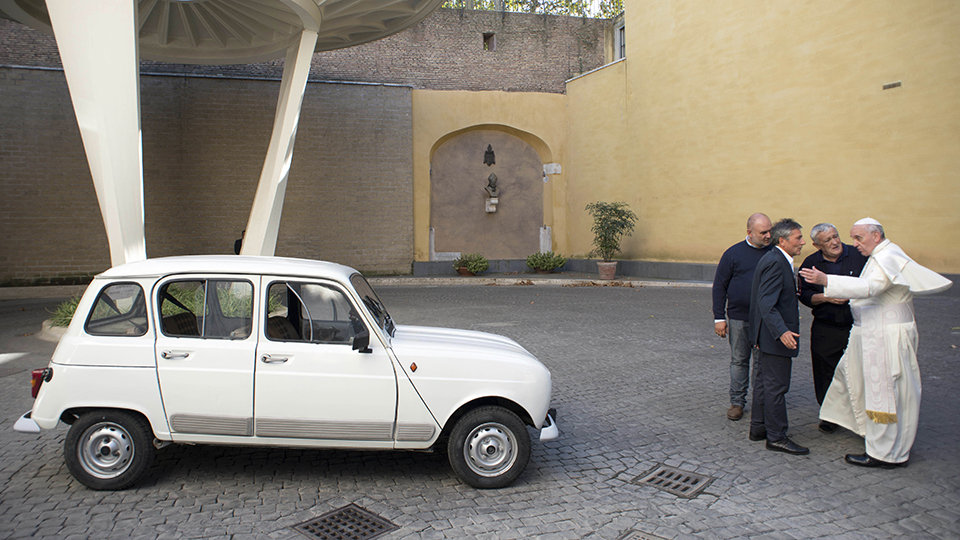
Italian priest gives Francis his 1984 Renault 4 with 186,000 miles on the clock to take for spins around Vatican City
Pope Francis plans to drive around Vatican City at the wheel of a popemobile that is a lot like him: frugal, clad in white and with a fair bit of mileage.
The 1984 Renault 4 with 186,000 miles on the clock was given to him by a 70-year-old priest from northern Italy, Father Renzo Zocca, who took the pope for a spin inside the walls of the tiny city-state.
“I think the pope will drive it a bit himself inside the Vatican,” the Holy See’s deputy spokesman, Father Ciro Benedettini, said on Thursday.
After the pope appealed to priests several months ago not to drive expensive cars but to save money and give it to the poor, Zocca wrote him a letter saying he had used the same car for decades and wanted to give it to the pope as a symbolic gift.
Last weekend Zocca brought the car, along with some of his parishioners, to the Vatican, where the pope told him he knew how to drive it because he had had a Renault 4 in Argentina.
The pope, 76, then got in and drove it, Zocca told the Italian Catholic magazine Famiglia Cristiana (Christian Family).
Francis, who as a cardinal in Buenos Aires travelled by subway, has shown a predilection for simple means of transport ever since his election in March as the first non-European pope in 1,300 years.
On the night of his election he shunned the bulletproof papal Mercedes limousine and rode in a minibus with the cardinals who had chosen him to lead the Roman Catholic church.
During his trip to Brazil in July he was driven around Rio de Janeiro in a small silver Fiat at his own request, and when he visited a refugee centre in Rome on Tuesday he used a Ford Focus from the Vatican’s car pool.
Francis has shunned the spacious and luxurious papal apartments used by his predecessors and has opted to live in a small suite in a Vatican guesthouse.
Although Francis will probably never need them in Rome, which is hit by serious snow only about once every 25 years, Zocca said his snow tyres were still in the boot. “You never know,” he told Famiglia Cristiana.

Renault 4 production across the world
At home everywhere
The new spearhead of Renault’s international strategy was the Renault 4; could it really claim to be the “universal car” that every manufacturer dreamed of? Apparently, the answer was “yes” thanks to the impressive versatility embedded in its genes.
Moreover, its moderate price helped it reach all customer groups; its removable bodywork and sturdy platform facilitated its transportation and changes to its body. These are the reasons why the Renault 4 is the most produced French car (more than eight million units) and above all the most distributed internationally.
Built and sold on all five continents
Depending on the location, the model’s distribution took rather different forms. In Europe, the Renault 4 was dispatched from the production site in completed form. For destinations further afield, the cars were sent out in the form of CKD (completely knocked down) collections; they were assembled locally, sometimes in very small units. Sometimes a manufacturing licence was granted to the producing company, which was distinct from Renault. The authorities often defined an “integration rate”, a proportion of parts that had to be manufactured on site. The incomplete assemblies or “small collections” were shipped, making it possible to create work for local industry.
The Renault 4 was assembled in 27 different countries—a record—and markets where it was not sold were few and far between. Of every 10 cars sold, six were outside of France and five were made abroad. Over the course of its life, the Renault 4 took on every task: taxis in Colombia or Madagascar, police cars in Yugoslavia, shopping in Buenos Aires, ambulances in Mexico, mail delivery in Denmark or roadside assistance in Spain. The Renault 4 supported the company’s export ambitions which were tirelessly promoted by Pierre Dreyfus.
Renault 4 production outside France
Europe
Belgium
Present since 1922, Renault built a site close to Brussels in Haren: a storage hangar that in 1926 would become the company’s first assembly plant outside France. Although modest at the time of liberation, the assembly functions would eventually relocate to increasingly large facilities. Beginning in 1958 the site found a purpose, which was to supply Benelux countries and other European markets or even the booming American market. The plant, which became Renault Industrie Belgique in 1971, manufactured more than one-tenth of the company’s total production in the 1970s.
The Renault 4 began rolling off Belgian production lines in 1961 and continued to do so through 1980. The local workforce’s reputation was well established and it was “Belgian quality” Renault 4 cars that had the honour of serving certain demanding customers like Germany. For more than 15 years, the Renault 4—including the van—was the most produced car in Haren (the Renault 5 would surpass it in 1978) in addition to being a bestseller in Belgium. It was a part of the national
automobile landscape: the Renault 4 was delivered to the roadside aid organisation Touring Secours, the Gendarmerie, the postal service, the Telegraph and Telephone Company and so on. Specific characteristics of Belgian versions:
Intended to meet demand in the EEC, the “made in Belgium” Renault 4 was hardly different from the cars manufactured at the le Seguin plant, except for the engine. However, in the 1970s, whilst the “4 windows” version of the Renault 4 had been abandoned in France, a Renault 4 “B” saloon version stayed on the Haren production line alongside the 4L with six windows; intended for government agencies and fleets, it was confidentially distributed in France under the name “Renault 4 Commerciale Grande Socit”. In Belgium, the “B” remained in the catalogue as a passenger car alongside the 4 TL until the late 1980s. Furthermore, like other countries, Belgium produced its own limited editions like the “Shopping”, 350 units of which were released in the spring of 1982.
Italy
In October 1958 Renault signed an agreement with Alfa Romeo; its terms stipulated that the Milanbased manufacturer, which was a state-owned company like Renault, would be able to assemble Dauphine cars under licence at its Portello factory and sell them in its network. For Renault this was the only way to penetrate the most protected market in the young European Community.
March 1962 saw the creation of SAM (Sviluppo Motorist Meridionale: [Company for] Automobile Development in Southern Italy). This Franco-Italian structure was intended to distribute the Renault product range in the peninsula and to encourage industrial growth in the Mezzogiorno. The Renault 4 would in fact be assembled at Pomigliano d’Arco near Naples in a barely modern pre-war plant.
Production of the Renault 4, sold with the 845 cc engine in “4” (four windows) and “4L” (six windows) versions, began in December 1962. The Italian version could be recognised by its Alfa Romeo Giulietta rear lights and its small indicators on the front wings.
This strategy initially paid off: thanks to assembly, sales of the Renault 4 doubled between 1962 and 1963. Unfortunately it was just a flash in the pan: the Italian government soon instated a tax based on the fiscal rating and the length of a car. This was obviously a disadvantage for the Renault 4 compared to its small Italian competitors. This weakened the partnership with Alfa Romeo and production ceased in early 1965. Joint distribution became a theoretical fact and Renault Italia had to patiently rebuild a proprietary network. Luckily sales bounced back quickly. At the end of the 1970s, whilst distribution of the Renault 4 slowed in some countries, in Italy it continued to increase, peaking in 1980 with 40,238 units sold! As proof of this continuing success, in the spring of 1985, Renault Italia ordered from Car Systme Style (Redon) 600 “JP4” cars, an original leisure vehicle build on the shortened platform of the Renault 4. The cars were to be marketed by the Italian subsidiary under the name “Frog”. One of them was even used by Iliona Staller, the famous “Cicciolina”, during her parliamentary campaign in 1987.
Spain
After the war, the Spanish car industry had to rise from its ashes. To promote the construction of sites on Spanish soil, the government introduced prohibitive customs duties and imposed a rising level of integration on fitters. Renault jumped into the fray just after SEAT. In December 1951 it created F.A.S.A. (Fabricacin de Automviles Sociedad Annima), a private company in which Renault held only a 15% share. It chose Valladolid, to the northwest of Madrid, to build a small, modern plant where it began producing the 4 CV in October 1953. After licensing the Dauphine, the Renault 4 rights were granted to FASA, which turned out the first models at Valladolid at the end of 1963. Nicknamed “Cuatro Latas” (four gears), the Renault 4 already accounted for one-third of production in 1964. The country’s low equipment rate (one car for 48 inhabitants) made it a very attractive commercial draw. By 1970 Renault would have no less than 25% of the market. FASA and Renault’s subsidiary in Spain, Renault Espaa S.A. (R.E.S.A.) merged at the beginning of 1965 and Renault’s share in its equity gradually rose to over 50%. The local facilities quickly became the target of massive expansions. On 1st July 1965, FASA became a subsidiary of the Renault Authority and took on the name FASA-Renault. The Spanish Renault 4, which accounted for 50% of Valladolid’s production at the end of the 1960s, was equipped with the 845 cc engine from the Dauphine, which was already made on the premises. When it was launched in 1964, its utilitarian version met with the same success. Beginning in 1970, the subsidiary began building a high-roof version that was incorporated as-is (with its special fenders, rims and engine) to the French product range in the 1973-1975 model years. Like Haren, FASA was on its way to becoming a decentralised operating site subsequent to a legislative change that occurred in 1972:
industrial partners could now enjoy a 50% integration rate provided that two-thirds of their production was exported. This is how the Spanish Renault 4 found its way to Portugal, Columbia, Venezuela and Mexico… It held out nearly until the end of the model’s career on the lines at Valladolid, with volumes that were anything but inconsequential: 403,213 saloons between 1963 and 1989 and 396,704 vans through August 1991.
Particular features of Spanish Renault 4s:
Limousine:
1964: Introduction of the 4L model; 12-volt electrical circuit; rounded bumpers with chrome-plated guards. Through 1975 the Spanish retained a decorative rim around the rear license plate similar to the first models in France.
1965 models: New version of the 4L Super with separate seats and nicer upholstery.
1967 models: Bumpers and indicators similar to those of the Renault 8.
Beginning with the 1968 model, the Renault 4 Super was fitted with the 852 cc “Sierra” engine with five crankshaft bearings (a variation on the Renault 8 engine) and a four-speed transmission.
Front seats like the Renault 8. New instrument panel and new radiator grille (like in France), but addition of “devil horns” and armrests on the doors. The 4L model kept the 845 cc model for another year. Through 1977, the “basic” 4 models featured the old bonnet with the “little mouth” which made them look like the very first versions.
1974 model: Introduction of pierced rims.
1975 model: Matt black plastic radiator grille (like in France).
1976 model: The Super took the name “TL”.
1978 model: R5 TL steering wheel. Bumper similar to the ones on the French model.
1980 model: Only the TL was still available.
1981 model: Assembly of the 1,108 cc 38 HP engine introduced in France in 1978 on the GTL; front disc brakes.
1982 model: New instrument panel.
The last models could be recognised by their rubber-like side moulding strips and, after 1987, by their rims like those on the R5 GTL, which were also fitted on the van.
Vans:
Engines and construction details like those of the limousines, sometimes adopted later (852 cc
engine in 1969, small-mouth radiator grille up to and including the 1976 model).
Available in three versions: “F” (panel van) and “FS” (high-roof van) from 1970 and “FSA” (high
roof and glazed, with wheel hubcaps) from 1972. Note that the F6 extended van was built in Spain
beginning in 1981 in its panel and glazed versions, leading to the disappearance of the high-roof F4.
Portugal
In late 1963, Renault also opened an assembly plant in Portugal. Named “Industrias Lustitanias Renault” (I.L.R.), it was located in Guarda, 250 kilometres northeast of Lisbon. Although from 1st January 1964, the authorities banned the import of complete cars, CKD parts circulated freely, to the benefit of local labour. FASA provided 75% of the funding for the ILR factory, whose surface area tripled over 10 years. The Renault 4 and the van launched the facility and, until 1973, made up a good half of production, which at the time meant 6,000 vehicles a year. The “Catrella” then had to take a backseat to the Renault 5, but its production continued through the end of the 1980s.
In the meantime, Renault Portuguesa S.A. (the structure that replaced ILR in 1980) became a significant company, helping to create a robust “Iberian division”. Other plants came to complement the Guarda factory and part of the production was re-imported into France (“Lusifrance” vehicles).
Particular features of “Guarda” Renault 4s:
Initially, the Renault 4 vehicles produced by ILR were fairly similar to the French models although many of the parts were supplied by local companies. From 1971 to 1976, the Portuguese 4 versions followed the lead of the Spanish ones with which they shared the “C” type 852 cc engine.
In 1973, they were given the name “Renault 4 LC”. In 1976 a new R1123 version appeared which copied the French 5 HP Renault 4 with the 845 cc “B” (Billancourt) engine.
Ireland
In the 1960s, selling cars in Ireland was a gamble. The market was dominated by the British (which had a 60% share) and all sorts of duties which prevented vehicles from penetrating it. Therefore the majority of cars sold were assembled in-country. Since 1958, Renault cars had been made in Naas, close to Dublin, by Motors Manufacturers and Distributors Ltd., which also handled distribution. In 1963, imports were entrusted to the Smiths group, which would also begin assembly two years later at a small plant in Wexford. Renault had begun at an extremely modest level but had won 9.5% of the market by 1977. Starting in 1962, the Renault 4 (touring and utilitarian) was the kingpin of this success: it accounted for half to two-thirds of all Renault cars manufactured in Ireland. From 1966 to 1980, between 2,000 and 5,000 units were produced each year. Local assembly began a steady decline in 1973 when Ireland joined the Common Market: the preferential scheme applied to CKD was slated for elimination in the medium term. Renault began to scale back and in 1977 Wexford became the only plant that assembled the Renault 4. Their production, which had become unprofitable, came to an end in 1984.
Yugoslavia
After legislation was relaxed in 1964, Renault was able to import and sell between 2,000 and 5,000 cars a year in Yugoslavia to customers holding foreign currency. In light of this success, Renault considered for a time assembling the Renault 4 and 16 TS at the Ikarus plant, which produced motor coaches, but it was in Ljubljana, the capital of Slovenia, that the range would be assembled starting in November 1969, at the “Titovi Javodi Litostroj”. In September 1972, Renault signed a new agreement with I.M.V. (Industrija Motornih Vozil), which owned a modern assembly plant in Novo Mesto where Adria caravans were produced for export to Europe. Production was initially limited to the Renault 4 and 12, but grew quickly. Renault thus became the number two manufacturer in Yugoslavia after Zastava which had long been assembling Fiat models. Between 1973 and 1992, the plant produced 575,960 Renault 4 cars and focused its production solely on that model from 1976. After the Billancourt plant closed in 1987, IMV supplied between 9,000 and 20,000 cars per year to the European market. Sold to the Renault Group in 1988, the factory was christened Revoz D.D. Very popular in the former Yugoslavia, the Renault 4 was affectionately nicknamed “Katrca” (Catherine).
Greece
The particular context of the Regime of the Colonels meant that the Renault 4 would not be assembled in Greece as intended by the project hatched in 1971. In order to get round a restrictive tax system, from 1980 to 1985 MAVA assembled some 3,500 units of a successful reinterpretation of the Rodeo known as the Farma, a multipurpose polyester vehicle available in canvas-roof and van versions. Approved by the Renault design department, the vehicle was distributed and maintained by the network.
Africa
Morocco
In the early 1960s, Renault led the Moroccan market. In August 1966, SOMAR (Socit Marocaine des Automobiles Renault) received authorisation to oversee the assembly, alongside other makes of vehicles, of Renault and Saviem cars by Socit Marocaine de Constructions Automobiles (SO.MA.C.A.). A semi-public company founded in 1959 by Simca and Fiat, SOMACA managed a plant at An Sebaa in the suburbs of Casablanca. In 1971, the company installed its own assembly line in the country; the production of this Renault Morocco plant reached its peak in 1975 with 13,000 cars. At that time, some 33,000 Renault 4 saloons and 11,000 vans had already been assembled in Morocco. The star of the late 1970s was the Renault 12, but the elder statesman proved resistant, as it continued to come off the assembly lines until 1994, a few months after it was abandoned by the other country that was still producing it, Slovenia!
Algeria
In the 1950s, Renault held 30% of the local market. In June 1959, it decided to assemble vehicles there. The CARAL (Construction des Automobiles Renault en Algrie) was created to this end and in November 1959, Pierre Dreyfus laid the first stone of the “Maison Carre” plant in the town of Harrach, near Algiers Dauphine production began there in January 1961. After independence, a quota was applied to the import of complete vehicles. The company was obliged to focus entirely on assembly, which it did for the Renault 4 and Renault 8 (in equal numbers), the Renault 4 van version and other utility vehicles. The plant underwent a major expansion in 1969-1970. Renault then covered 80% of the passenger car market in the country. In 1969, for every 11,290 cars produced, 4,230 were Renault 4s and 2,435 Renault 4 vans. But the mood soured and Algerian authorities demanded the payment of arrears on customs duties from which Renault had been exempted by common accord. Renault suspended parts imports in the spring of 1971 and production grinded to a sudden halt.
Tunisia
Since 1961, a small plant had been assembling Renault trucks in Sousse; the operating company, S.T.I.A. (Socit Tunisienne d’Industrie Automobile), was held by the Tunisian government (60% share) and Renault (40% share). The site began producing light vehicles in January 1964. The limousine and van versions of the Renault 4 were chosen for the operation. The first unit rolled off the production line on 28 July 1965. The first passenger car built in Tunisia, the small Renault was named the “R 4 Monastir” by President Habib Bourguiba, after his hometown. Depending on the year and the allotted quota, production varied from 150 to 800, the vast majority of which was always vans (sometimes as much as 90%). Volume even climbed to 1,625 cars in 1980; however, one year later the government decided to end the STIA’s monopoly and issue a call for tenders including several companies. This gave birth in 1983 to the Mateur Renault complex. The Renault 4 was not produced there, but it had largely contributed to getting Tunisia rolling.
Cte d’Ivoire
In 1962 the Renault-Africa Regional Division created a subsidiary dedicated to assembly, the Socit Africaine de Fabrication des Automobiles Renault (S.A.F.A.R.). The plant was near the port of Abidjan and assembled light trucks then, toward the end of the year, the Renault 4. Production quadrupled in eight years to reach 4,000 units, including trucks, in 1970. The majority of production (50%) was always devoted to the Renault 4. But the customs facilities still granted to French products were gradually phased out starting in 1972. Renault ended assembly in Abidjan in the mid-1980s.
Ghana
Intermittent assembly activity involving small Saviem busses began in 1966 at the C.F.A.O. plant in Accra. In 1969, the Ghanaian plant began producing Renault 4 saloons and vans. Around this time, Renault, Peugeot and B.L.M.C. received approval to build a shared plant. The project never got off the ground, but Renault 4 production continued until 1978, manufacturing around 100 per year.
Zaire (now Democratic Republic of the Congo)
In 1969, Renault clinched an assembly agreement with General Motors, which for a time assembled Renault 4s in its Kinshasa plant.
Angola
In 1970, the representatives of Chrysler France, Citron, Renault and Ford U.K. in Angola together created S.A.C.M.A. (Sociedade Angolana de Construcoes e Montagem de Automoveis) to assemble utilitarian vehicles in Luanda. The breakdown by brand is not known because it appears that assembly was carried out on an as-and-when basis according to the orders received. Around 450 Renault 4 vans were produced between 1971 and 1975, then almost as many again between 1977 and 1980, with a number of saloons on top. Production was transferred to more modern facilities in 1981 (FAGOL facilities).
Madagascar
In 1960, the newly independent Madagascar attempted to develop an automotive industry. Two assembly lines emerged there in 1962. The small plant in Antananarivo which assembled Renault cars, SOMACOA (Socit Malgache de COnstruction Automobile), in which Renault held a minority interest, began producing the Renault 4 on 5 September 1962 (the van would be added five years later). Trucks and other models in the “touring” range came after that, as well as Peugeot vehicles. Between 500 and 1,000 Renaults (one-third of the island’s registrations in the mid-1960s) were assembled on the island each year, most of them Renault 4s (between 310 and 530 saloons and 50 to 150 vans, varying from year to year). However, in 1981 the economic situation led the government to suspend all import licences. Renault was forced to close down the plant, in agreement with its partner.
South Africa
The subsidiary “Renault Africa Property Limited” was created in Johannesburg in October 1958, but the assembly of Renaults under licence had begun two years prior in East London in cooperation with the British firm C.D.A. (Car Distributors and Assemblers). CDA also produced vehicles for other brands, but in 1964, out of 9,366 vehicles assembled, 3,069 were Renaults. Production of the Renault 4 saloon and van had begun one year earlier. In 1967, operations were transferred to Rosslyn, close to Pretoria in the Transvaal, to a plant belonging to Rosslyn Motor Assemblies, a recently created company controlled by Nissan. As manufacturing delays mounted, Renault teamed up with Peugeot to form National Assembly Ltd. and began production in July 1970 at Natalspruit, near Johannesburg. Two years later, a lack of space caused Renault’s operations to once again be relocated to Rosslyn after exponential growth. In light of these challenges and because of stricter legislation, Renault sold its business to the Lawson Group to maintain a presence at a lower cost. At that point the Renault 4 saloon and van no longer accounted for more than 1% of an already modest volume (2,589 vehicles in 1972), but in the best years, about one out of every 10 South American Renaults was a Renault 4. Production between 1963 and 1972 is estimated at 3,900 units.
Southern Rhodesia (now Zimbabwe)
In the 1970s Renault attempted assembly at the Willowvale Motor Industry site in Salisbury. This former Ford plant which also assembled Alfa Romeos made it possible to support South African production at a time when it had become less profitable, and to even replace it: it produced 2,973 Renaults in 1974 (of which 1,412 Renault 4s), compared to 230 in South Africa. In this market, the Renault 4—nicknamed the “Noddy car”—was adopted by the national guards who patrol the nature reserves. However, beginning in 1975, the civil war intensified and in August 1978, the United Nations published a report denouncing the 593 companies which were violating the boycott rules issued by the Security Council. Renault shuttered its operations in 1979. After the country became independent, choosing the name of Zimbabwe, the Renault 5 reappeared for a time on the lines, but not the Renault 4, whose local production totalled about 6,200 limousine versions.
South and Central America
Argentina
Nine months after setting up in Brazil (where the Renault 4 was not produced) and granting the Dauphine licence to Willys Overland do Brasil (W.O.B.), Renault repeated the manoeuvre in Argentina by signing on 27 November 1959, a second contract with Willys, this time in conjunction with its subsidiary Industrias Kaiser Argentina, or I.K.A. Since 1955, this semi-public company had produced 20,000 Jeep and Kaiser units in its Santa Isabel plant, located 800 km to the northwest of Buenos Aires in the province of Cordoba. Renault granted it the Dauphine licence. One month later, a similar agreement was finalised in Mexico. The Renault 4, which the factory called “EA” (Econόmico Argentina), joined the production of touring versions (December 1963) then of the “Furgn” (February 1964). It incorporated many Dauphine features, including the gearbox and the “Ventoux” engine, which were made on the premises. The launch was as spectacular as the first media test drives had been in Camargue two years earlier: the cars were engaged in a rodeo alongside “criollas” horses steered by gauchos, and the journalists were able to drive the cars on waterlogged terrain, proving their suitability to local conditions. A well-known figure gave the operation his blessing: Juan Manuel Fangio, the famous race car driver, who also became a major Renault car dealer in Buenos Aires. In 1974, the abilities of the Renault 4 earned it the nickname “El Correcaminos” (“Roadrunner”). Its production volumes quickly surpassed the Dauphine.
In 1967, the Kaiser Group put Willys Overland do Brasil up for sale; Renault did not have the necessary funds and had to give way to Ford. But Renault took advantage of the opportunity to consolidate its position in Argentina and buy the majority of Kaiser-Frazer’s IKA shares. Assuming a reasonable assembly volume, Renault controlled 55% of a company whose size was enviable: 10,000 employees; 200 million dollars in turnover; 50,000 cars produced, including 17,000 Renaults (of which 11,000 R4s) which accounted for 15% of sales in the country. In 1975, Renault acquired all of the shares that still belonged to IKA. The new entity, “Renault Argentina S.A.” (R.A.S.A.), held an enviable number two position in the market for a long time, investing regularly to modernise its facilities. As elsewhere, the Renault 4’s role as a car of conquest was eventually eclipsed by the Renault 12 which launched in April 1971 and for three years led the market, selling nearly 450,000 units. But the Renault 4 had nothing to be ashamed of, with 157,315 units produced (148,170 saloons and 9,145 utilitarian—of which 173 pick-ups) and a long career that did not conclude until August 1986 for the saloon and December 1987 for the van. This total did not even include the CKD units that IKA began supplying to Chile and Uruguay in 1972, exporting between 2,500 and 4,000 each year.
Snapshot of the Argentine Renault 4:
– Base model: 4L version/Renault 4L (Sep. 1963-April 1970); retained the small radiator grille of the early French models (1962-1967) up to and including the 1969 model year; Ventoux 845 cc engine, 33.5 SAE HP. Bumpers with impact bars in the front and rear (including on the vans). Four speed gearbox beginning with 1965 model year. Handbrake mounted on the floor to control the rear wheels.
– Improved version: Renault 4G (December 1967-April 1970), with enlarged headlamps and new instrument panel; series of 100 Renault 4 “Parisienne” units between May and October 1968, with wicker pattern and special colours.
– April 1970: introduction of a “4S” version with a 1,020 cc engine with five crankshaft bearings rated at 40 SAE HP (later 48 HP), new fully synchronised four-speed gearbox; enhanced suspension and brakes. The 4L got the 1,020 cc engine at the same time; its career continued through January 1972. After this date, only the 4S was available. Beginning in 1979, the bumpers were flat and painted grey with horizontal stops to coordinate with the new radiator grille in matt grey plastic.
– In September 1984, the 4S was replaced by the 4 GTL with its 1,108 cc engine like the French GTL, but with 41 HP.
– 4 Van: “Furgόn” version (1963-1970) with 4L features, saloon tail lights mounted on plates. 4F version (1970-1985) with 1,020 cc engine. “4F4” and “Pick-up” versions (1985-1987) with 1,108 cc engine.
Colombia
The Renault 4 arrived in 1965, at the initiative of the importer Auto Andes, which procured cars made by Spain’s FASA, as well as bare chassis on which it built a some rather elegant three-door estate models. In 1967 Renault responded to a government call for tenders and won the contract to build a car assembly plant with an annual production of 15,000 units at Envigado in the suburbs to the south of Medellin. The semi-public company thus created, the SOFASA (Sociedad de Fabricacin de Automotores S.A.) also established a distribution network; this is how, on 15 July 1970, the Renault 4 became the first passenger vehicle assembled in Colombia. Over the years it would be joined by other models, but it was this “Amigo fiel” (according to a 1975 ad campaign) that would bring success. Customers were at first hesitant about this tiny car, but SOFASA won over sceptics in 1970-71 by organising the “Colombia Rally”, during which Renault 4 caravans raced across the most challenging trails. Production peaked at 29,007 units in 1979, accounting for 70% of the entire market, all brands included! In 1992, because Renault—and rightly so—no longer shipped Renault 4 parts, SOFASA had to stop production of the car that Colombians came to consider as their national car after having manufactured some 97,050 of them. The Colombian facilities play an important role today for Renault in South America.
Some unique features of the Colombian Renault 4:- The first Renault 4 turned out was nicknamed “Azul Pastrana” because of its blue colour and in honour of the new president Misael Pastrana, who implemented a flexible credit system to make it easier to buy a Renault 4. – In 1975 a Renault “Plus 25” was introduced; it was so named because its 1,022 cc engine (a cubic capacity unheard of in Europe) was 25% more powerful than the previous 845 version; it became the “4 GTL” with the same engine in September 1982. A better equipped “GTL Master” version debuted in 1985. Same outer appearance as the Argentine 4s. – 1989: Special “Jogging” edition with a sporty look and red accessories.
– The top-of-the-range model was the “Lider”, for which production began in June 1990; it boasted a 1,289 cc engine (like the Renault 12) that was also used on the local Renault 6.
– A version of the French “Plein Air” (discontinued in 1970) existed in small quantities between 1989 and 1991: it was the 4 “Brisa”, an evocative name.
Mexico
After the war, the Mexican government set about creating a national industrial sector. Consequently, in 1951 the state-owned company Diesel Nacional (DINA) was created to build rail equipment, trucks and busses. On 15 January 1960, as the government forbade imports of complete vehicles, Renault went through difficult negotiations to sign a licencing contract with DINA. The assembly line was located 100 km from Mexico City at Ciudad Sahagun in the high plains of the Northeast (2,450 m). The city was haphazardly cobbled together at great cost toindustrialise a neglected region. In June 1962, the Dauphine was joined by the Renault 4 limousine and van in their 845 cc versions, then the Renault 8 and even Alpine mini-saloons. All these cars were considered to have been “nationalised” by the Mexican government! The factory also handled advertising and distribution. One of the advantages of this captive market was that, at the beginning of 1965, the Federal District purchased 300 Renault 4s and distributed among the 30 states to provide medical and social assistance and 100 others for the Mexican telephone company. In late 1966, the subsidiary Renault Mexicana took the reins and boosted sales, which rose to a 9% market share. The Renault 4 accounted for between a quarter and a tenth of total production, varying from year to year. An estimated 20,000 Renault 4 saloons and 7,500 vans were produced between 1962 and 1977.
Particular features of Mexican Renault 4s: “Star” hubcaps from the first French models up through the 1970s; “Plein Air” version dubbed the “4 Costero”; the last models had front fenders equipped with a small bull bar and off-set stops.
Peru
In January 1966, Renault and American Motors created I.A.P.S.A. (Industria Automotriz Peruana S.A.) in which they each had an equal share; in the suburbs of Lima, IAPSA would assemble Renault and Rambler models, as well as Peugeots, thanks to a contract signed with the importer of the two brands. The shipments which supplied local assembly were exempt from customs duties and many auto manufacturers intended to share this small market in the very short term. Although the IAPSA plant had an annual capacity of 3,700 vehicles, between 1966 and 1970 only 750 Ramblers, 700 Renaults (Renault 4s and 10s, in roughly equal numbers) and 500 Peugeots were manufactured. The endeavour came to an end in October 1970.
Chile
Beginning in 1964, Renault assembled the Renault 4 and the Rambler Classic 6 at Arica in the Indauto plant co-owned with American Motors; after an interruption in 1966 and 1967, Renault 4 production recommended at Los Andes, north of Santiago, in facilities belonging to A.F.C. (Automotores Franco Chilena), which were shared with Peugeot. Production was limited to approximately 400 Renault 4s in 1968 and 1,200 in 1969. In 1975 the government authorised some manufacturers to expand, but Renault was reluctant to reinvest money in a country still under a dictatorship. Instead it settled for small-scale production of the Renault 4 (about one thousand per year) in its “4S” Argentine version using CKD components from Cordoba. The factory at Los Andes (Cormecanica) has since been modernised and now produces gearboxes for the Renault Group.
Venezuela
As the Venezuelan government was regularly reducing import contingents, the subsidiary “Automovil de Francia” decided to build an assembly plant at Mariara, 100 kilometres north of Caracas, in yet another partnership with American Motors. The production of Renault 8s and Ramblers began in May 1963. Venezuelans had to wait until 1972 for the Renault 4 to arrive on their production lines, but for three years it was their star model. However, the automotive programme of the Andean Group, an economic community to which Venezuela belonged, assigned its member states specific sectors and Venezuela was relegated to exclusively producing models with 1.5 to 2 litres. Moreover, the government froze the prices of certain models in the bottom of the range; with its margins plummeting, the Renault 4 was dropped from the manufacturing scheme in 1976, after some 6,500 units.
Uruguay
It was in 1962-1963 that Renault sent its first CKD vehicles, Renault 4 vans, to Industria Automotriz Peruana S.A. in Montevideo; 20 vehicles in all were produced that year. Another 250 followed, but on 16 June 1966, the country found itself in the throes of a currency crisis and suspended all imports; assembly did not return to a regular pace until 1970. In 1971, production was relocated to Santa Rosa Automotores which had theretofore assembled Simca models. In 1972, Renault 4 pick-ups sent in CKD form by the plant in Argentina were added to production, preceded by a few Renault 4 “Touring” cars (including a “fastback” version known as the “Renault 4 Mini”). An estimated 4,500 small vans were produced over the course of 20 years.
Costa Rica
Some Renault 4s were assembled in Costa Rica by Auto Ensembladora S.A. in San Jos, alongside the Renault 8 and 10. Production of all models combined exceeded no more than 50 or so units a year between 1965 and the end of the decade.
Indian Ocean and Asia
Ceylon (now Sri Lanka)
Despite the invitations of the government, Renault preferred instead to continue delivering complete cars based on opportunities as and when they arose (for example, in 1969, a fleet of 44 Renault 4s was delivered for use by taxi companies). However, starting in November 1973, Renault sent several nationalised companies (such as the Marajah Organization Ltd. plant) CKD collections of the R4 Torpedo, which were undoubtedly left-over bodies from the Renault 4 Plein Air. These cars would be assembled until 1978-1979 on a small scale (one hundred per year). The statistics also show 94 vans produced in 1974 and 1975: unless this is a local extrapolation based on the famous “torpedoes”?
Philippines
About 15 assembly plants were operating in the Philippines at the beginning of the 1960s. Since 1958, the Liberty Motors plant had been making Renaults in Manila, including the Renault 4 starting in 1963. In 1968, Renault Philippines Inc. built its own facility at Manila-Makati. The Renault would be assembled there through 1970 (saloon) and 1974 (vans) with an approximate total production of 150 saloons and 650 vans.
Oceania
Australia
CKD assembly, without local incorporation, began in 1949 in Belmore in the suburbs of Sydney, in the factories of Ira L. & A. C. Berck Pty Ltd. Ten years later the Renault Australia subsidiary was formed; some production was subsequently moved to West Heidelberg, a suburb of Melbourne in the state of Victoria. The Renault 4 was launched on the market in July 1962 and assembled locally in small quantities until 1966 (the van version was also on the production line). Overall production remained modest (about 1,500 cars per year), but in 1966 Renault Australia purchased the West Heidelberg plant; this investment made it possible to comply with a law requiring an incorporation rate of 45%. The pace was quickly tripled, but production focused on the Renault 10.

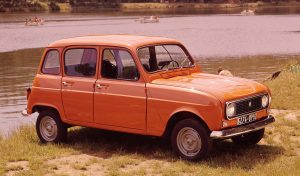

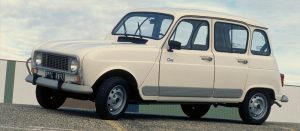
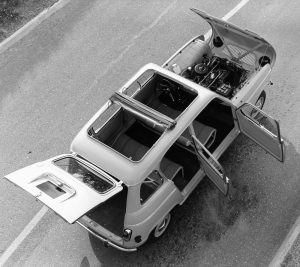

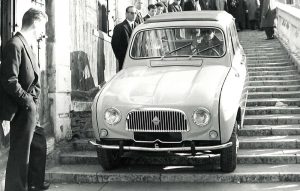


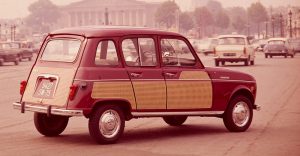
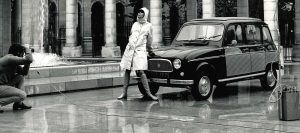


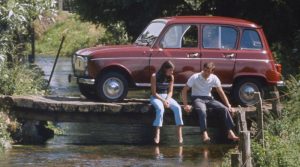
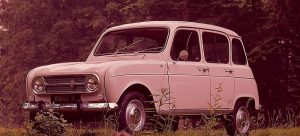
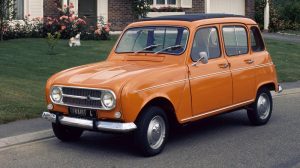


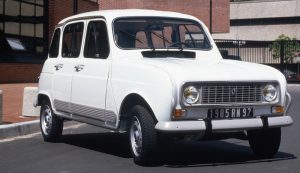
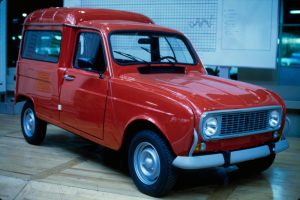

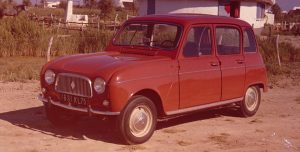
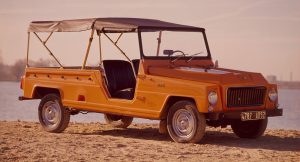
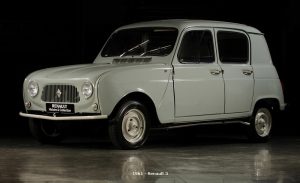
You must be logged in to post a comment.